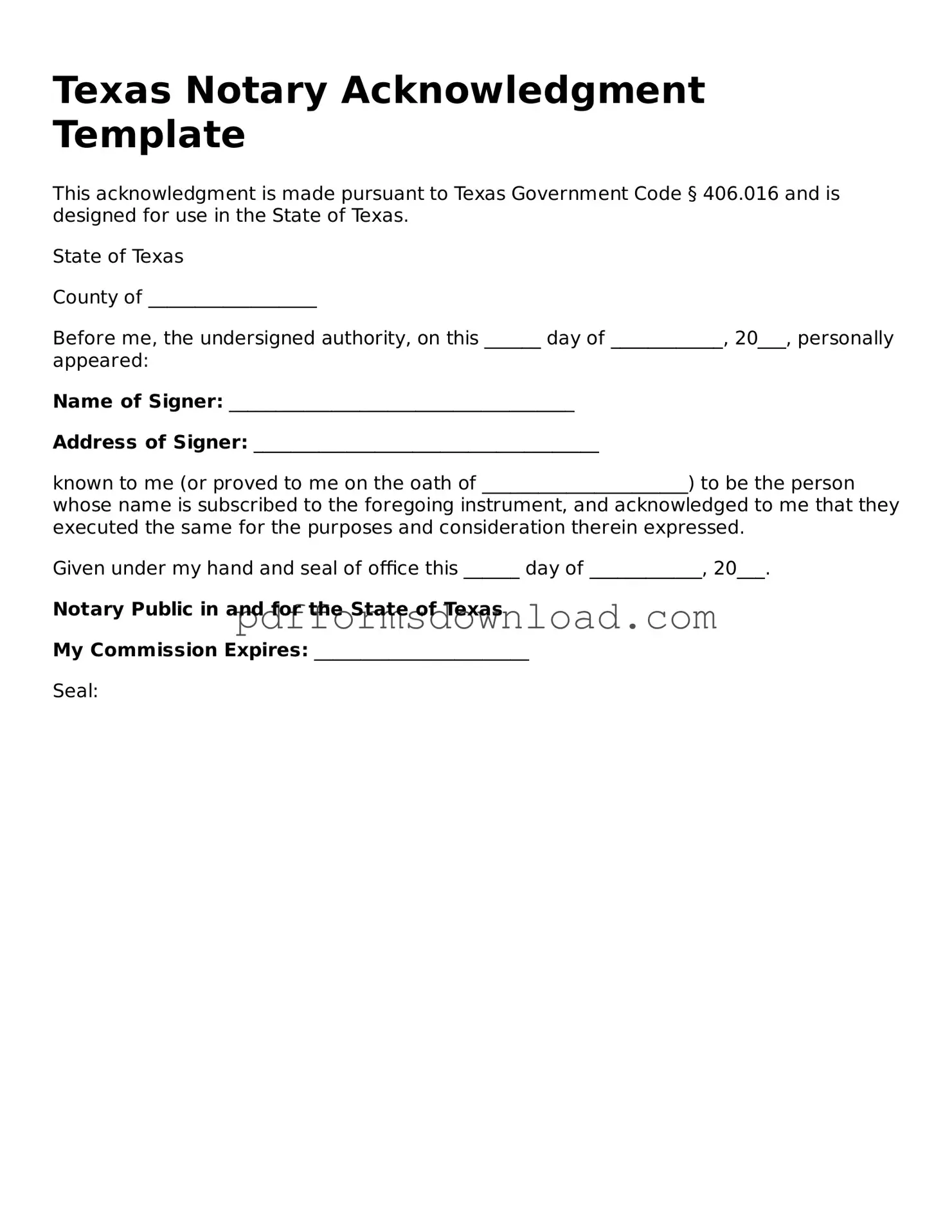What is a Texas Notary Acknowledgement form?
The Texas Notary Acknowledgement form is a legal document used to verify the identity of a person signing a document. This form serves as proof that the individual appeared before a notary public, who confirmed their identity and willingness to sign. It is commonly used for various documents, including contracts, deeds, and affidavits, ensuring that the signatures are authentic and legally binding.
When is a Notary Acknowledgement required in Texas?
A Notary Acknowledgement is typically required when a document must be recorded with a government office, such as a county clerk's office. This includes real estate transactions, such as property deeds and mortgages. Additionally, certain legal documents may require notarization to be enforceable in court. Always check the specific requirements for your document to ensure compliance with Texas law.
How do I complete a Texas Notary Acknowledgement form?
To complete a Texas Notary Acknowledgement form, follow these steps: First, ensure that the signer is present and has valid identification. Next, the notary public will fill out the form, including details such as the date, the name of the signer, and the type of document being acknowledged. The signer must then sign the document in the presence of the notary. Finally, the notary will affix their seal and signature to complete the process. It is essential to ensure that all information is accurate to avoid any issues later on.
What should I do if my Notary Acknowledgement is rejected?
If your Notary Acknowledgement is rejected, first determine the reason for the rejection. Common issues include missing information, incorrect notarization, or failure to follow proper procedures. Once you identify the problem, you can take steps to correct it. This may involve re-signing the document in front of a notary or providing additional information. If necessary, consult with a legal professional for guidance on how to proceed. It is important to address any issues promptly to ensure that your document is valid and enforceable.
